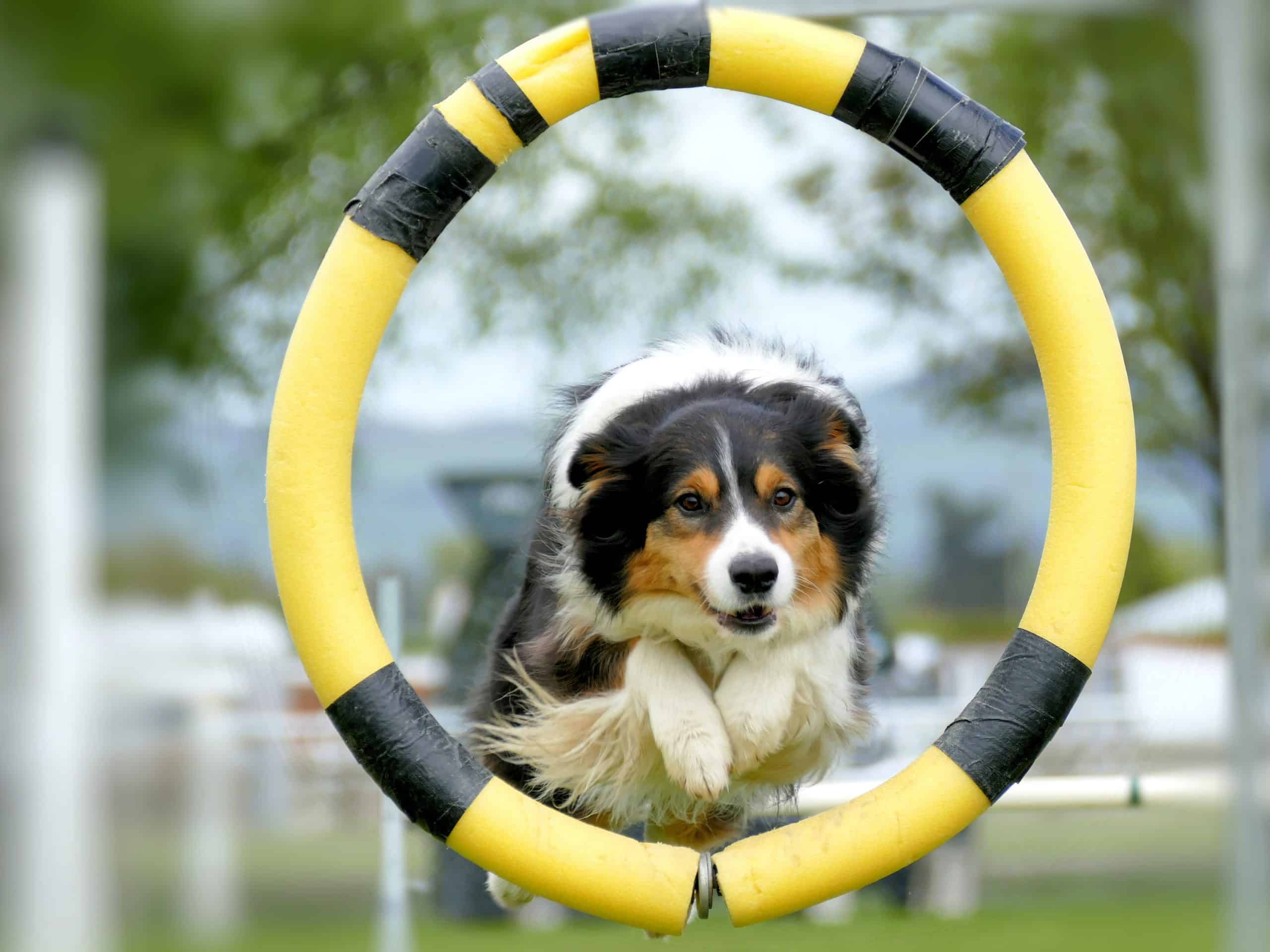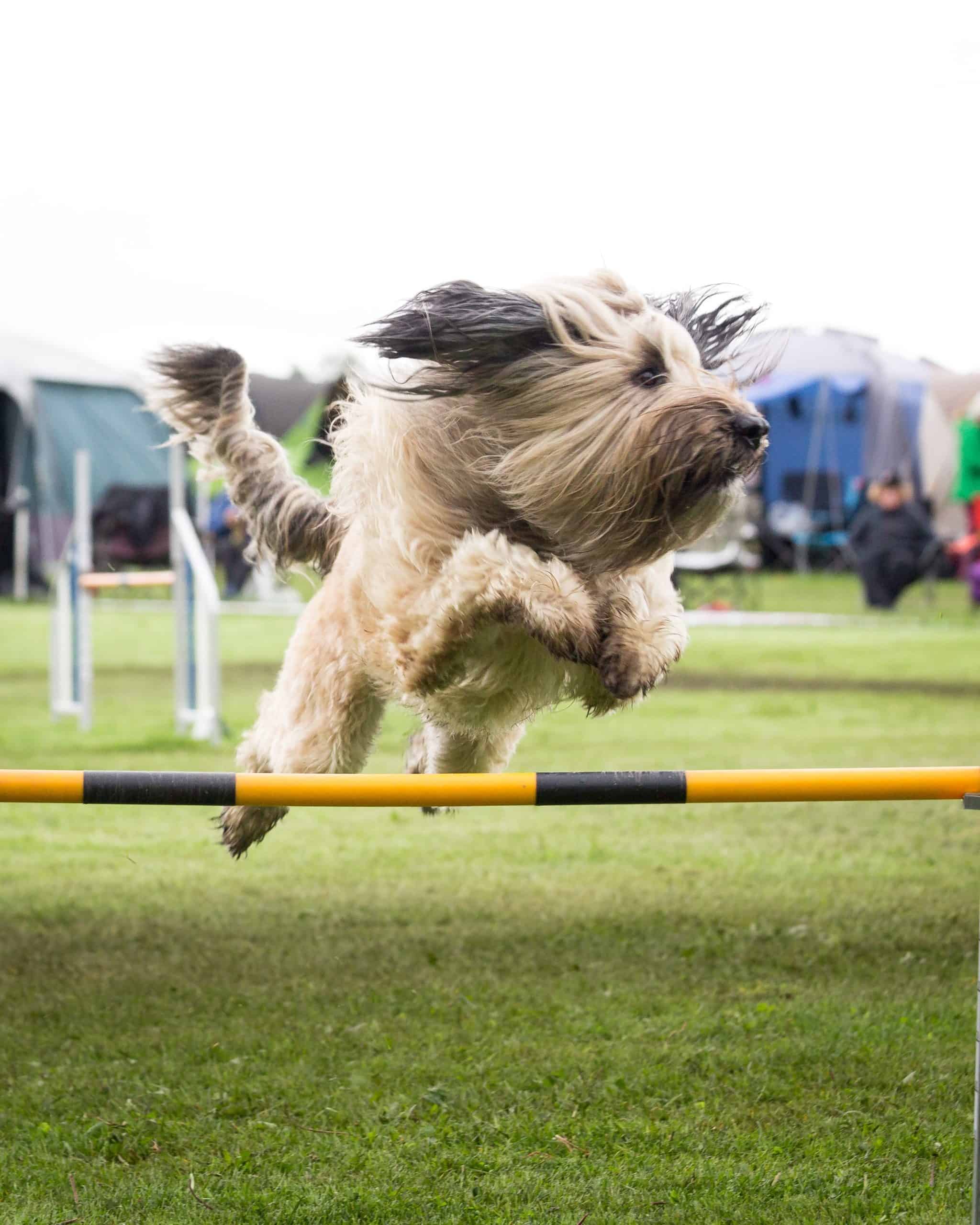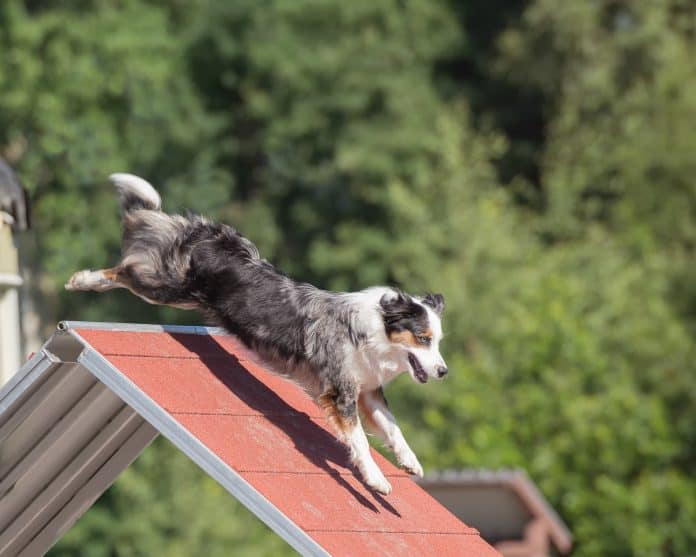Agility is a sport for dogs where a dog’s owner directs his dog through a pre-set of obstacles, including tunnels, pause tables, seesaws, weave poles, and tire jumps. You and your dog have to go through around 15-20 obstacles in a limited amount of time.
Agility is an athletic challenge that keeps your dog fit, healthy, and mentally stimulated. You can start when your dog is still a puppy; however, for agility competitions, the dog should be at least 2 years old.
This sport is perfect for dogs that require a lot of energy during the day but also if you want to build your dog’s endurance, prevent obesity, and strengthen its bones and joints. It is also a great way to bond with your pet, as there is some sort of teamwork between the owner and their dog.

Where to start?
Puppies may not be able to compete yet, but getting them used to agility at a young age is beneficial. First, because they will learn the basics of obedience, like sit, lay down, and stay, and it will make it easier for them to listen to you in the future, but also because they will get used to a healthy lifestyle from the start.
- Get your treats!
In order to teach your dog agility and the basics of obedience, you must give them something to reward them. What usually gets them going are treats and praises.
- Contact obstacles
Contact obstacles are obstacles where at least one of your dog’s paws has to touch, on one or both sides of the obstacle. We can name the A-frame, dog walk, and teeter-totter.
- The A-frame is a cone-shaped walkway. Dogs must be able to walk up the steep incline and back down the other side.
- The dog walk works like a balance beam for dogs with ramps on either end.
- The teeter-totter is a board that moves under your dog’s weight. Your dog must learn to walk across it as it moves.
You can teach your dog to make this contact by leaving a treat where it has to stop
To lead your dog to the obstacle, you can attach a leash to them and hold it. Make sure to give a command, like naming the obstacle, so it will associate the name with the obstacle and know what to do in the future. Start with the A-frame. Say the name of the obstacle loudly and clearly, then move quickly to the obstacle with the leash in your hand, leading your dog to it.
You may need more treats at first in order to coax your dog over the obstacles. If it still doesn’t want to get on, pick up your dog and place it yourself on the end of the obstacles. Try a little higher each time you feel your dog is getting comfortable at the previous spot.
- Jumps
Once you feel like your dog is comfortable with and used to the contact obstacles, you can switch to jump obstacles. Don’t start too high; 1 or 2 inches above the ground is enough. You can even put the bar on the ground to get your dog used to jumping above something.
Take the leash, and just like the contact obstacles, make sure to name each jump with a specific name like “big jump” or “small jump”. Quickly go to the obstacle with the leash and make them jump above it and not go around the obstacle. Once it’s done make sure to reward your dog with treats a lots of praises

- Tunnels
Tunnels are easy to teach but can be scary for your dog at first. Start with a short tunnel. Give the command “tunnel” and lead your dog to it, and be on the opposite side with a treat to encourage your dog to go through it. You can throw a few treats inside the tunnel to help it go through.

- Weave poles
Weave poles are a row of poles that your dog must weave in and out of. This exercise is difficult and will require a lot of practice and repetition.
You can lure your dog with treats to make it slalom between the poles. You can start with poles that are wide apart and reduce the distance between each little by little.

- Pause table
The pause table is an exercise where your dog will have to stay still, either in a sitting or lying down position. The hard part is keeping your dog still. Try to lure your dog onto a flat surface; usually the pause table is not higher than the height of a couch. Make your dog jump on that flat surface with treats and make it stay still. Start with one or two seconds and try to lengthen the time little by little.
- Be patient
Agility training takes time, even more so with clueless puppies, so make sure to be patient and gentle with positive reinforcement. Keep things fun and upbeat, along with a happy voice. Agility is a way to bond with your dog and make them enjoy the sport, not the contrary.
Once your dog has mastered all these obstacles, you can try doing them all together and see how long it takes for your dog to complete a complete circuit. You can try by doing two in a row and then adding one more until your dog is able to do them all together.
Pairing agility with a healthy diet is important to keep your dog in good shape and living a healthy lifestyle. Make sure to choose the right food according to your dog’s needs. You can ask a professional for a healthy diet for your new champion.
Find here a selection of healthy and delicious treats for your beloved dog:
- BURP! – Chicken Breast with Cheese: https://www.petloverscentre.com.my/products/chicken-breast-with-cheese-100g
- FISH 4 DOGS – Sweet Potato Fish Wraps: https://www.petloverscentre.com.my/products/sweet-potato-fish-wraps-100g
- ALPS NATURAL: Salmon & Cod Roll: https://www.petloverscentre.com.my/products/ocean-fish-salmon-recipe-salmon-cod-roll-100g



